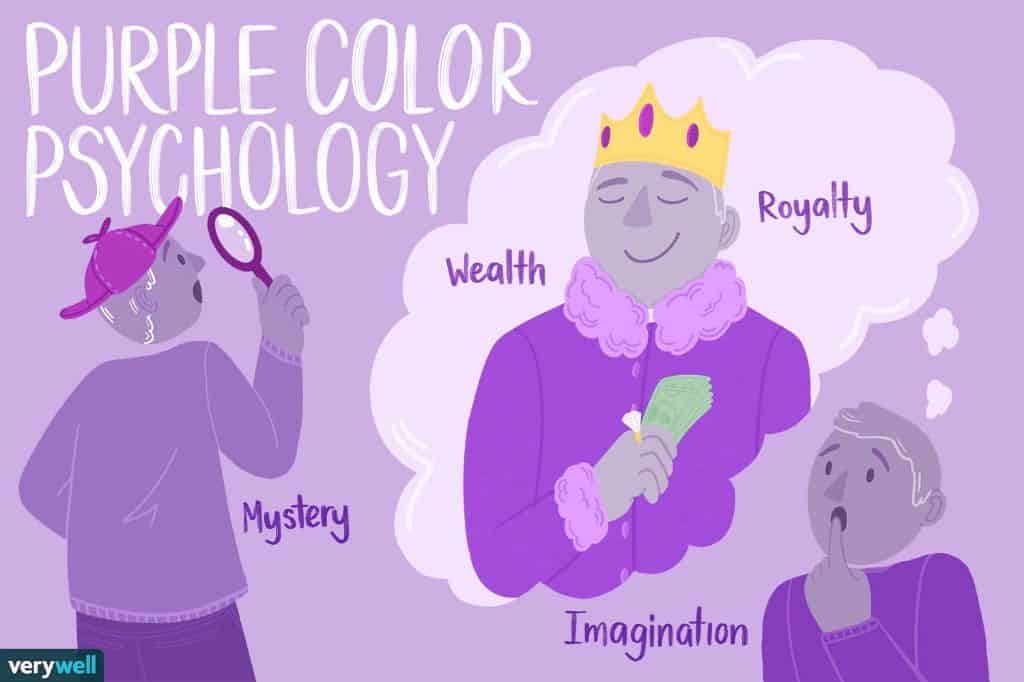Purple is a color that evokes a range of emotions and meanings for people. For some, purple may seem mysterious, regal, or spiritual. For others, it’s creative, quirky, or nostalgic. So what makes purple such a polarizing and powerful color for so many? Here we’ll explore some of the psychological, historical, and cultural reasons why people are drawn to the color purple.
The Psychology of Purple
Research has shown that color can profoundly impact our moods, emotions, and behaviors. So what does the color purple say about someone’s personality? Here are some common psychological associations with purple:
| Personality Trait | Description |
|---|---|
| Creative | Purple evokes creativity and imagination. It encourages free thinking and originality. |
| Unconventional | Purple lovers tend to think outside the box and embrace what’s unique or different. |
| Spiritual | In many cultures, purple represents spirituality, mysticism, and the metaphysical. |
| Regal | Purple is historically associated with royalty, prestige, luxury, and ambition. |
| Moody | Purple can reflect moodiness, with shifts between energetic highs and introspective lows. |
So in terms of personality, purple lovers tend to be creative, expressive, emotional, introspective, and individualistic. Purple appeals to those who want to stand out from the crowd.
History of Purple
To understand purple’s symbolism, it helps to look at the color’s past. Here’s an overview of the history behind purple:
| Time Period | Significance of Purple |
|---|---|
| Ancient Times | Purple was associated with royalty and high status due to the rarity and expensiveness of purple dyes. |
| Middle Ages | Purple retained its regal symbolism. Bishops and government officials wore purple robes. |
| 18th & 19th Centuries | Purple faded from fashion as chemical dyes made it more accessible. |
| 20th Century | Purple became linked to counterculture movements and psychedelic style. |
| Today | Purple is becoming trendy again, with many viewing it as creative, quirky, or nostalgic. |
For centuries, purple was exclusively a color of royalty and status due to the difficulty of producing stable purple dyes. It wasn’t until the mid-19th century that synthetic purple dyes became widely available. This changed purple’s long-standing connotations of wealth and prestige.
Cultural Associations with Purple
Here are some of the cultural meanings and symbols commonly connected to purple today:
| Association | Meaning |
|---|---|
| Femininity | Purple has traditionally symbolized feminine beauty, gentleness, and sophistication. |
| Romance | Dark purples are seen as romantic, passionate colors. |
| Nostalgia | Purple may evoke nostalgia for the 1960s and 70s psychedelic era. |
| Spirituality | In religion, purple represents preparation, penitence, and Easter. |
| Royalty | Purple still signifies luxury, ambition, and nobility in color symbolism. |
| Mysticism | Purple is linked to mysticism and the occult, as it’s thought to increase intuition. |
| Creativity | Bright purples reflect creativity, unconventionality, and artistic expression. |
| Ambiguity | Purple’s blend of warm and cool tones gives it an ambiguous, enigmatic mood. |
So while purple has a complex array of cultural meanings, it often represents the blending of contrasts like warm and cool, mind and body,logic and emotion. This makes it an endlessly fascinating color.
Scientific Properties of Purple
There are also interesting scientific reasons why people may be attracted to the color purple:
| Science Fact | Significance |
|---|---|
| Purple has the shortest wavelength of visible light. | This high energy wavelength stimulates the imagination and inspires creativity. |
| Purple mixes the stimulation of red with the calm of blue. | This combination is ideal for introspection, contemplation, and spirituality. |
| Purple is not a spectral color produced by a single wavelength. | Purple’s ambiguity matches its tendency to evoke mystery and the metaphysical. |
| The human eye has more red color receptors than blue or green. | This makes purple one of the most visually arresting colors we can perceive. |
| Purple shades can shift drastically based on lighting. | Purple’s mutability gives it an otherworldly chameleon-like quality. |
So the physics and biology behind how we see color give purple unique visual properties that explain its appeal. Purple offers rich sensory stimulation.
Personal Associations with Purple
Beyond the science, history, and cultural symbolism, most purple lovers have their own personal reasons for enjoying the color:
- It’s their favorite color from childhood
- It reminds them of a special person who loves purple
- Their astrological sign or birthstone is amethyst
- They feel it reflects their creative personality and free spirit
- It provides an optimistic mood boost and sense of inspiration
- They find it mystical, magical, and intriguingly ambiguous
- It provokes a feeling of nostalgia for a certain period or experience
- They simply find it prettier and more aesthetically appealing than other colors
For many, loving purple is tied to fond memories and positive associations built up over a lifetime. The color makes them feel happy, comforted, inspired, or mystically transported.
Conclusion
While purple may not be universally beloved, those who do love purple often feel a strong personal attachment and reaction to the color. With its blend of warm and cool tones, stimulating energy, and nuanced cultural symbolism, purple offers a visual experience that ranges from contemplative to psychedelic. From ancient royals to modern creatives, purple has long captured the human imagination. So if you’re wondering why you’re drawn to purple, rest assured there are good psychological, historical, cultural, and personal reasons why this mysterious color resonates with you. At the intersection of mind, body, logic, emotion, and spirit, purple exists outside ofblack and white definitions – and that’s exactly why purple lovers wouldn’t have it any other way.


